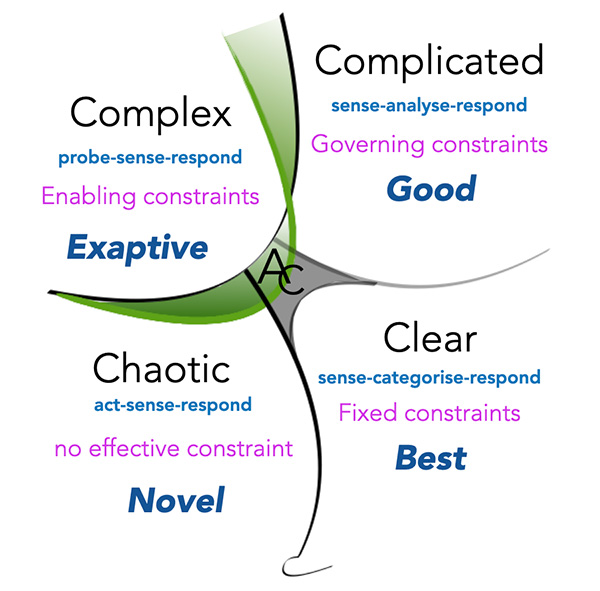The Sprint Planning with Fluid Scrum Team
7 tips for setting up new scrum teams
Pipedrive Unfixed (Case Study of a Unicorn Company) — unFIX
Coaching in the third wave of Agile
7 facilitation tips to start your Scrum Team
Agile Metrics : Agile Health Metrics for Predictability
Cynefin framework

The Cynefin framework is a sense-making tool that provides a common language for groups to identify the levels of certainty in the environment. It has five domains, with the central one representing “when we do not know where we are” (the AC refers to Aporetic or Confused). The main value comes from the conversations in understanding which of the other four domains we are working in:
- The Clear domain is where we can have one best practice. We should be able to look up the decision somewhere and get a predictable outcome.
- The Complicated domain is one of expertise. There are often several good options, and the right subject matter experts can guide the decision to a good outcome.
- The Complex domain means we cannot predict the outcome. We will need to navigate the environment and take an exploratory approach to influence our decision-making. This is where being partially correct shines, and we must be comfortable with the ambiguity that ensues. When we cannot predict an outcome, the attempt to gain certainty before we make a decision is costly and futile. This is the key reason for taking a test-and-learn (partial correctness) approach. How can we make the decision in a way that makes it safe to learn while helping us avoid bad unintended consequences? (Good unintended consequences are fine and should be amplified.)
- The Chaotic domain is where decisions are required very quickly, and the main aim is to control the environment and prevent further bad things from happening.
